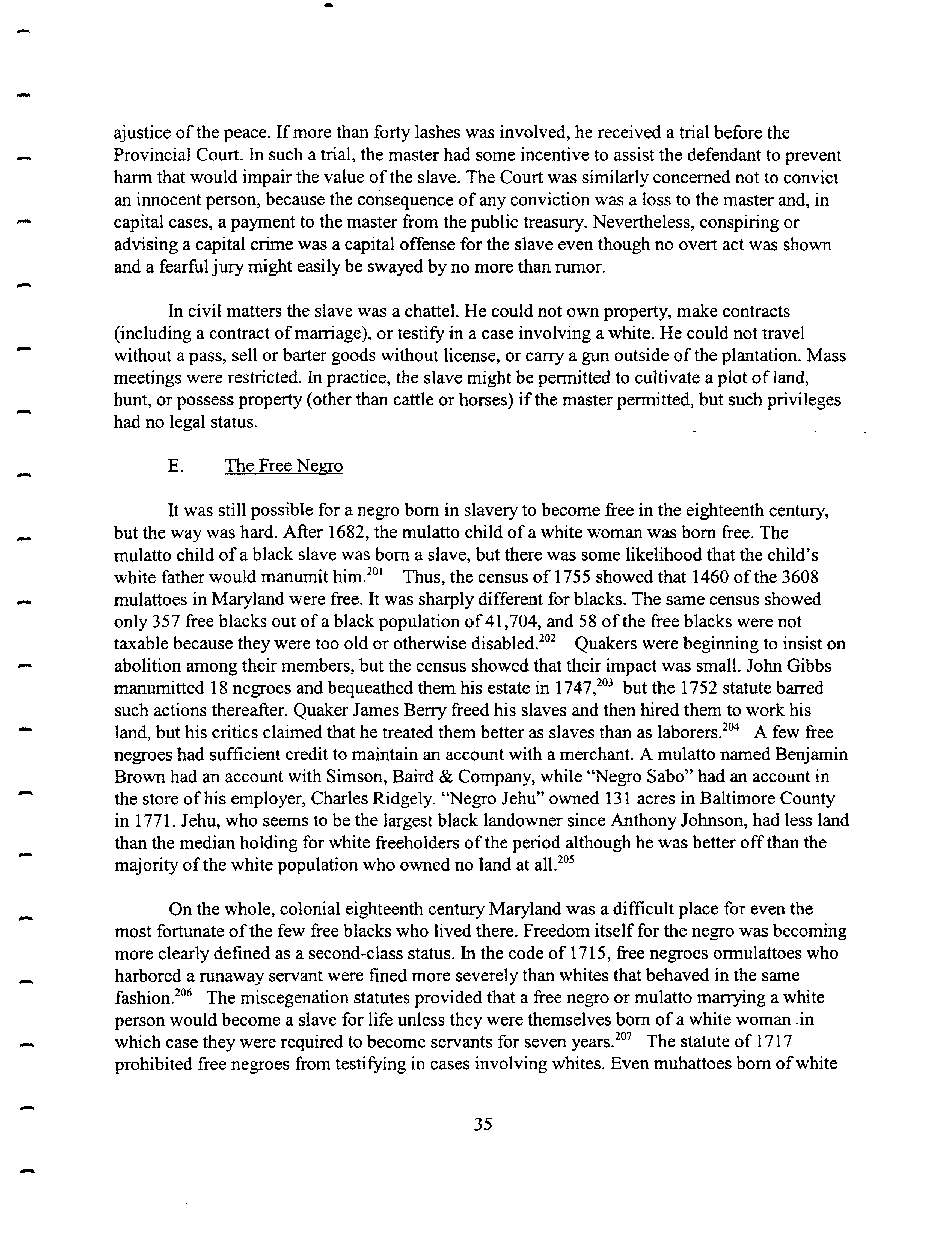|
ajustice of the peace. If more than forty lashes was involved, he received a trial before the
Provincial Court. In such a trial, the master had some incentive to assist the defendant to prevent
harm that would impair the value of the slave. The Court was similarly concerned not to convict
an innocent person, because the consequence of any conviction was a loss to the master and, in
capital cases, a payment to the master from the public treasury. Nevertheless, conspiring or
advising a capital crime was a capital offense for the slave even though no overt act was shown
and a fearful jury might easily be swayed by no more than rumor.
In civil matters the slave was a chattel. He could not own property, make contracts
(including a contract of marriage), or testify in a case involving a white. He could not travel
without a pass, sell or barter goods without license, or carry a gun outside of the plantation. Mass
meetings were restricted. In practice, the slave might be permitted to cultivate a plot of land,
hunt, or possess property (other than cattle or horses) if the master permitted, but such privileges
had no legal status.
E. The Free Negro
It was still possible for a negro born in slavery to become free in the eighteenth century,
but the way was hard. After 1682, the mulatto child of a white woman was bom free. The
mulatto child of a black slave was bom a slave, but there was some likelihood that the child's
white father would manumit him.201 Thus, the census of 1755 showed that 1460 of the 3608
mulattoes in Maryland were free. It was sharply different for blacks. The same census showed
only 357 free blacks out of a black population of 41,704, and 58 of the free blacks were not
taxable because they were too old or otherwise disabled.202 Quakers were beginning to insist on
abolition among their members, but the census showed that their impact was small. John Gibbs
manumitted 18 negroes and bequeathed them his estate in 1747,203 but the 1752 statute barred
such actions thereafter. Quaker James Berry freed his slaves and then hired them to work his
land, but his critics claimed that he treated them better as slaves than as laborers.204 A few free
negroes had sufficient credit to maintain an account with a merchant. A mulatto named Benjamin
Brown had an account with Simson, Baird & Company, while "Negro Sabo" had an account in
the store of his employer, Charles Ridgely. "Negro Jehu" owned 131 acres in Baltimore County
in 1771. Jehu, who seems to be the largest black landowner since Anthony Johnson, had less land
than the median holding for white freeholders of the period although he was better off than the
majority of the white population who owned no land at all.205
On the whole, colonial eighteenth century Maryland was a difficult place for even the
most fortunate of the few free blacks who lived there. Freedom itself for the negro was becoming
more clearly defined as a second-class status. In the code of 1715, free negroes ormulattoes who
harbored a runaway servant were fined more severely than whites that behaved in the same
fashion.206 The miscegenation statutes provided that a free negro or mulatto marrying a white
person would become a slave for life unless they were themselves bom of a white woman .in
which case they were required to become servants for seven years.207 The statute of 1717
prohibited free negroes from testifying in cases involving whites. Even muhattoes bom of white
35
�
|

